Years before we had heard the term Atmos Energy, years before we had heard the terms Barnett Shale or Chesapeake or XTO, before natural gas even was piped to our homes, gas was created artificially in local “gas works” that distilled coal or coke.
 Fort Worth got its first gas plant in 1877, established by John and Charles Lockwood. In the beginning gas was used only to light downtown streets and some nearby businesses. The city gave the Lockwoods a franchise to erect lampposts and to supply gas to the lamps. At dusk a lamplighter on horseback rode from lamp to lamp to light them. At dawn he made his rounds again to unlight them.
Fort Worth got its first gas plant in 1877, established by John and Charles Lockwood. In the beginning gas was used only to light downtown streets and some nearby businesses. The city gave the Lockwoods a franchise to erect lampposts and to supply gas to the lamps. At dusk a lamplighter on horseback rode from lamp to lamp to light them. At dawn he made his rounds again to unlight them.
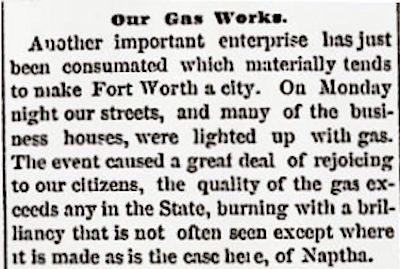 Cowtown’s “Let there be light” night came in March of 1877, when a few downtown streets and even some “business houses” were illuminated for the first time.
Cowtown’s “Let there be light” night came in March of 1877, when a few downtown streets and even some “business houses” were illuminated for the first time.
 In the early 1880s John Peter Smith and others formed Fort Worth Gas Light Company, which took over the utility contract with the city. Slowly the use of artificial gas expanded to more businesses (such as the El Paso Hotel and Pickwick Hotel) and finally to homes.
In the early 1880s John Peter Smith and others formed Fort Worth Gas Light Company, which took over the utility contract with the city. Slowly the use of artificial gas expanded to more businesses (such as the El Paso Hotel and Pickwick Hotel) and finally to homes.
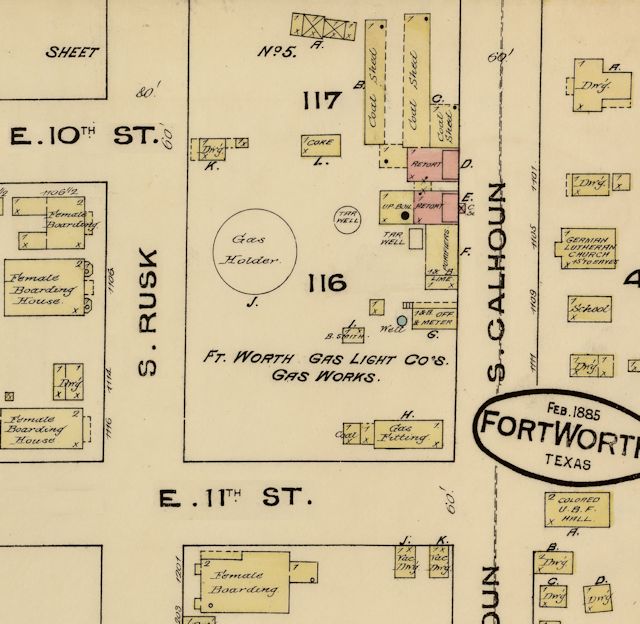 In 1885 the gas plant was in Hell’s Half Acre at Rusk (Commerce) and East 10th streets, wedged between “female boarding” houses (brothels) on the south and west and a German Lutheran church on the east.
In 1885 the gas plant was in Hell’s Half Acre at Rusk (Commerce) and East 10th streets, wedged between “female boarding” houses (brothels) on the south and west and a German Lutheran church on the east.

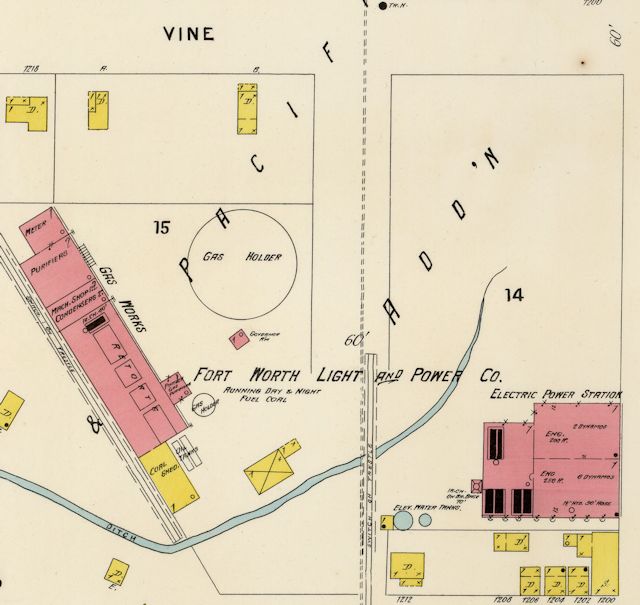 By 1896 Fort Worth Light and Power was supplying the city with both electricity and artificial gas. The electric plant and gas plant were on Vine Street in southwest downtown.
By 1896 Fort Worth Light and Power was supplying the city with both electricity and artificial gas. The electric plant and gas plant were on Vine Street in southwest downtown.
The new century brought big changes. In June 1909 Lone Star Gas Company incorporated in Fort Worth and in 1910 brought natural gas to Fort Worth from the Petrolia gas field. That’s the gas field that later supplied Fort Worth’s secret helium plant. Petrolia, in Clay County east of Wichita Falls, at the time was the largest reserve of natural gas in the state.
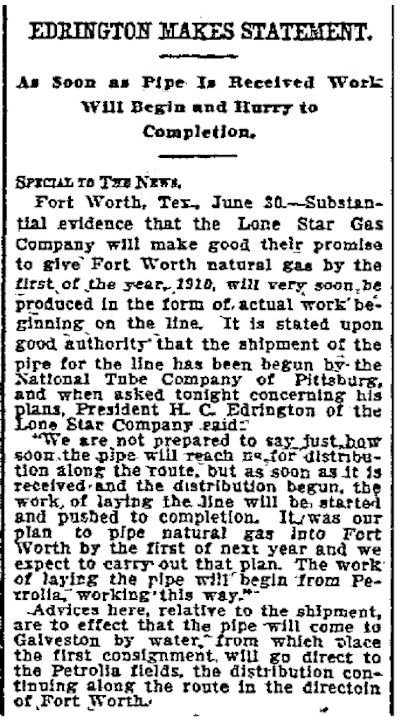 On June 30, 1909 the president of Lone Star announced: “It was our plan to pipe natural gas into Fort Worth by the first of next year, and we intend to carry out that plan.”
On June 30, 1909 the president of Lone Star announced: “It was our plan to pipe natural gas into Fort Worth by the first of next year, and we intend to carry out that plan.”
 This photo in the December 4, 1909 Dallas Morning News shows the pipeline ditch being dug—by hand—between Clay County and Fort Worth.
This photo in the December 4, 1909 Dallas Morning News shows the pipeline ditch being dug—by hand—between Clay County and Fort Worth.
Fort Worth indeed got natural gas in 1910. Lone Star Gas, as owner of the pipeline, was a wholesale distributor to local gas utilities. In Fort Worth that utility was Fort Worth Gas Company (of which Lone Star Gas was a major owner).
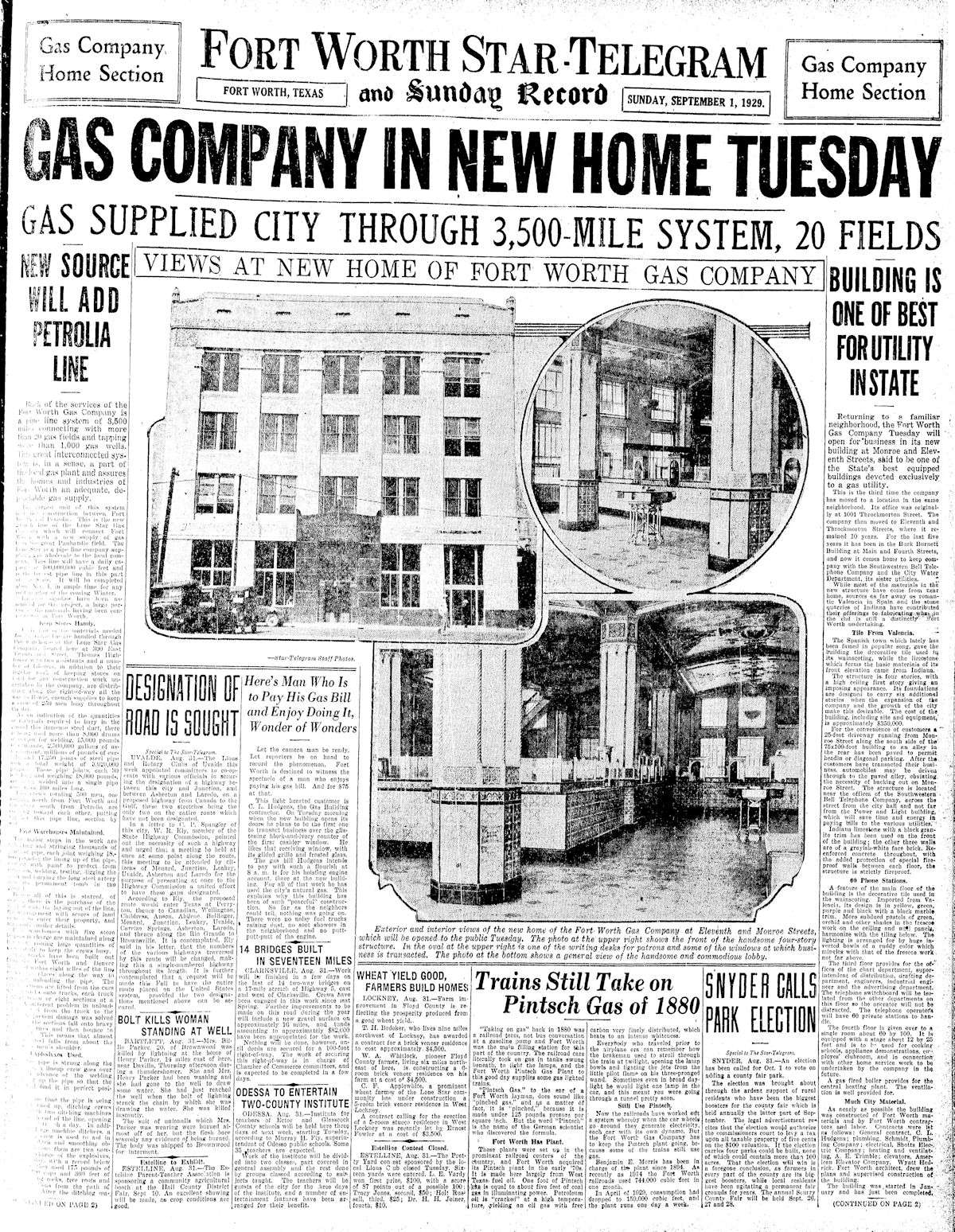 In 1929 Fort Worth Gas Company built a new home on Monroe Street and moved from 4th and Main. The new building was designed in art deco style by the ubiquitous Wyatt Hedrick.
In 1929 Fort Worth Gas Company built a new home on Monroe Street and moved from 4th and Main. The new building was designed in art deco style by the ubiquitous Wyatt Hedrick.
 In 1931 Lone Star Gas bought Fort Worth Gas.
In 1931 Lone Star Gas bought Fort Worth Gas.
In 1957 three floors were added to the original four of the Monroe Street building. Today the building is almost hidden behind City Hall. The former Lone Star Gas building now houses city water department offices.
Some views of the Lone Star Gas Building:
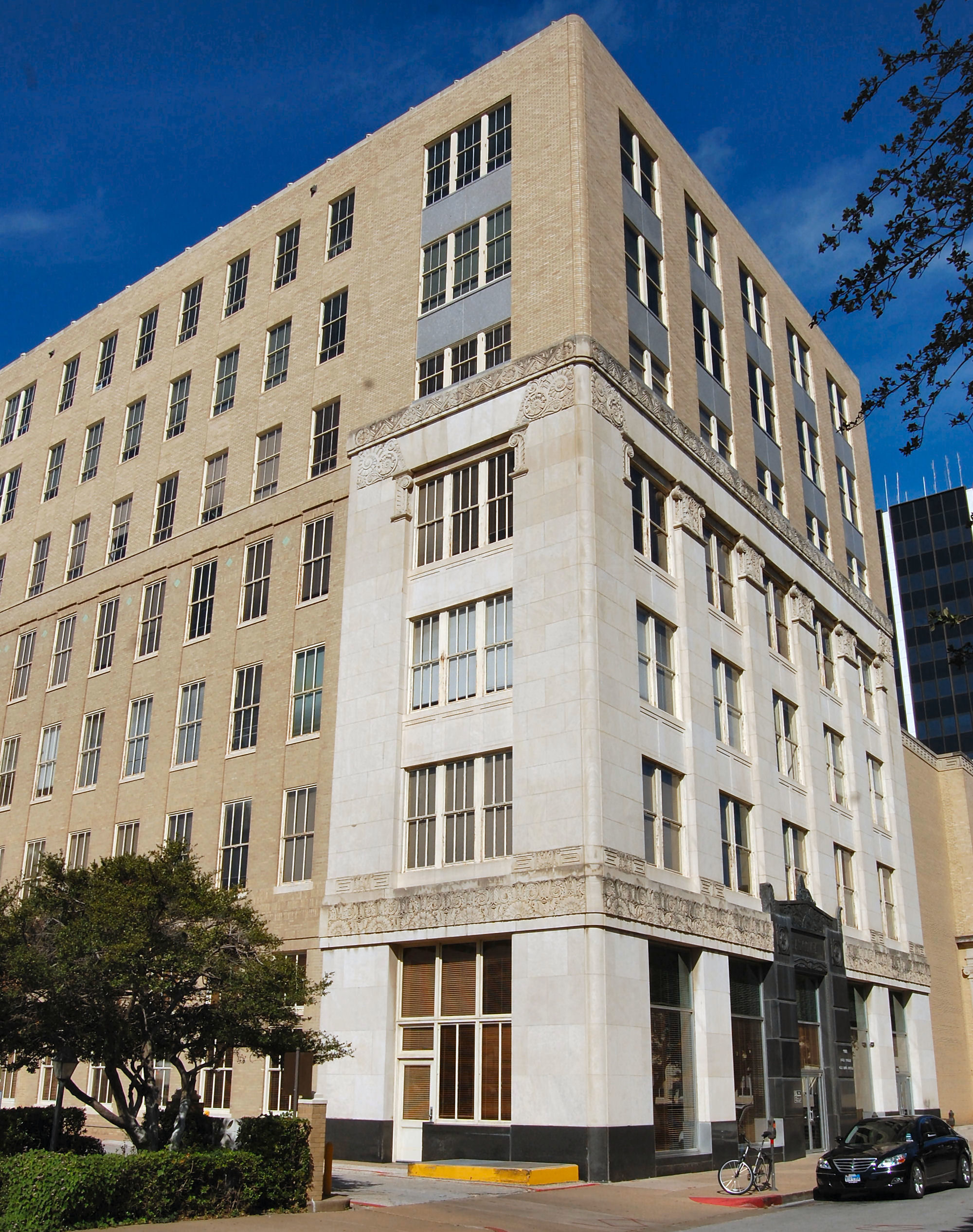
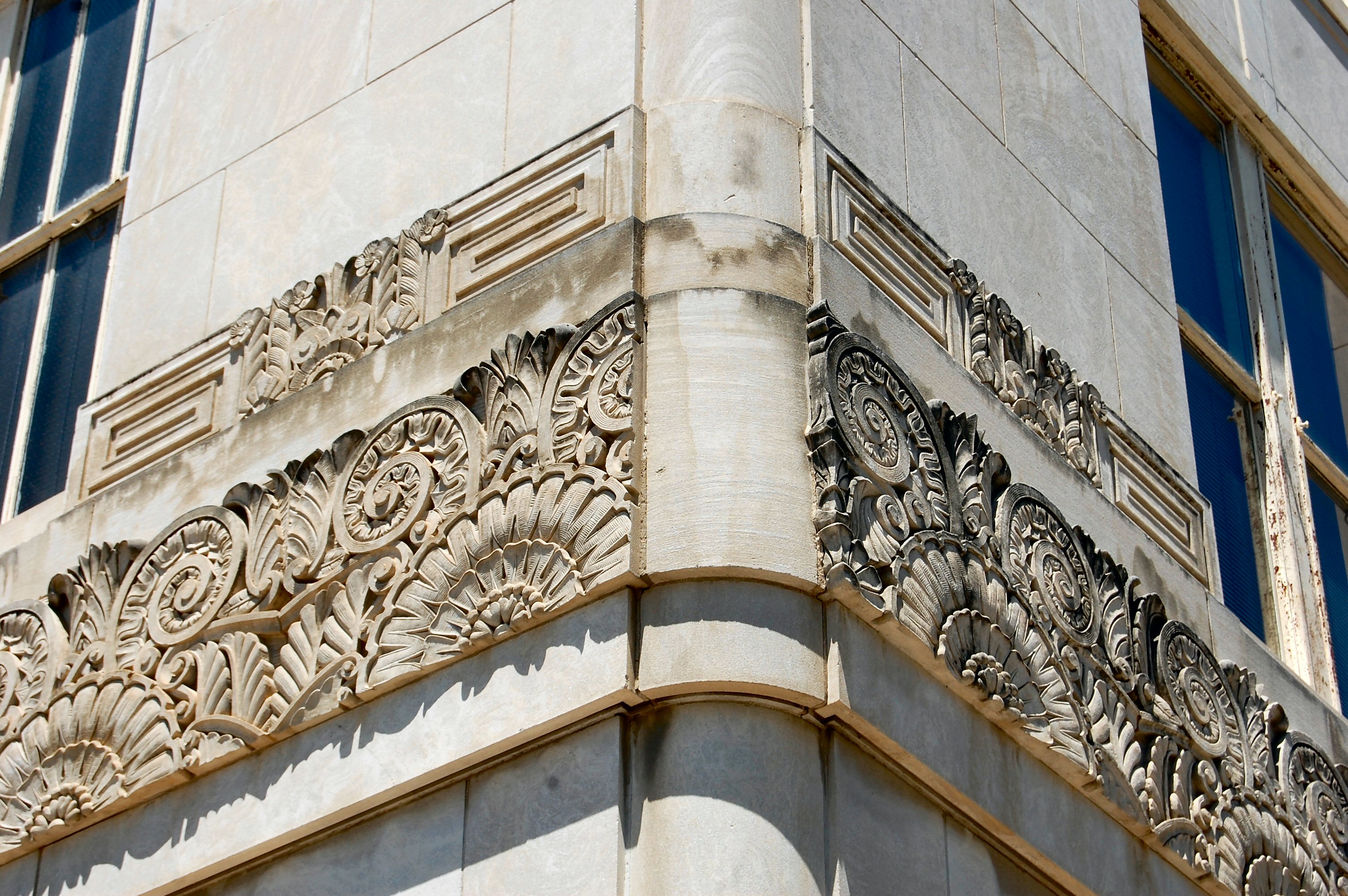
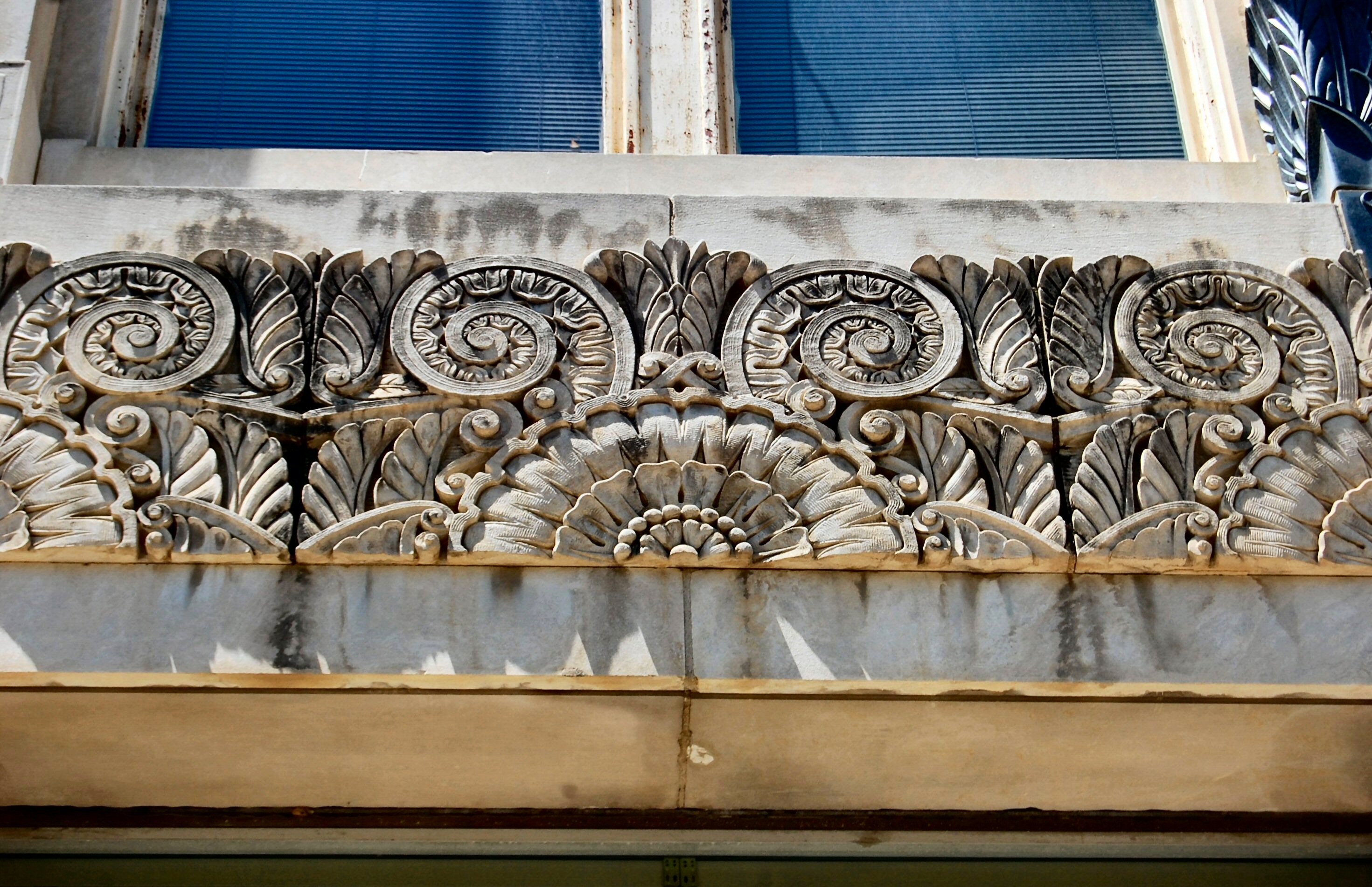
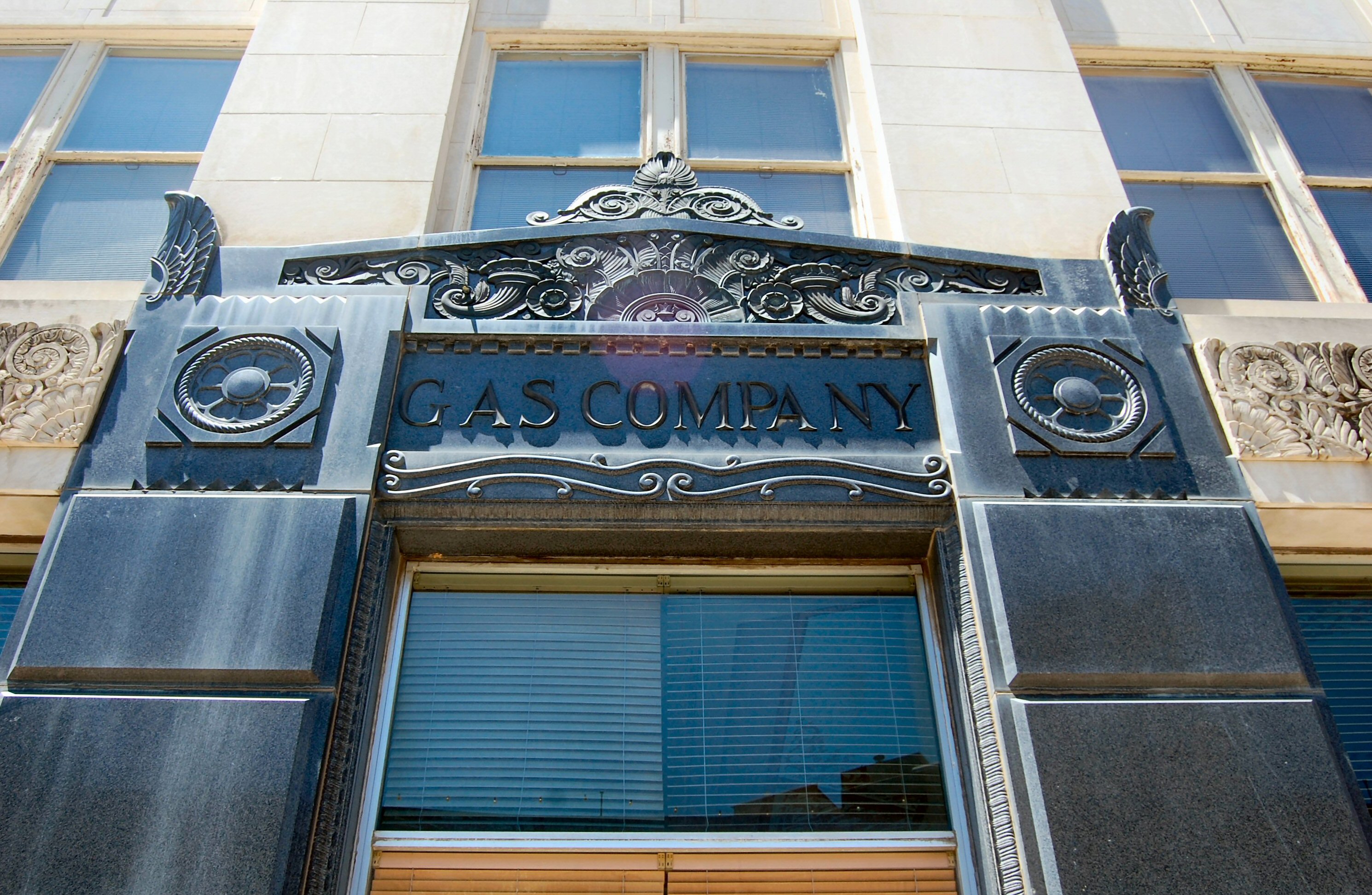
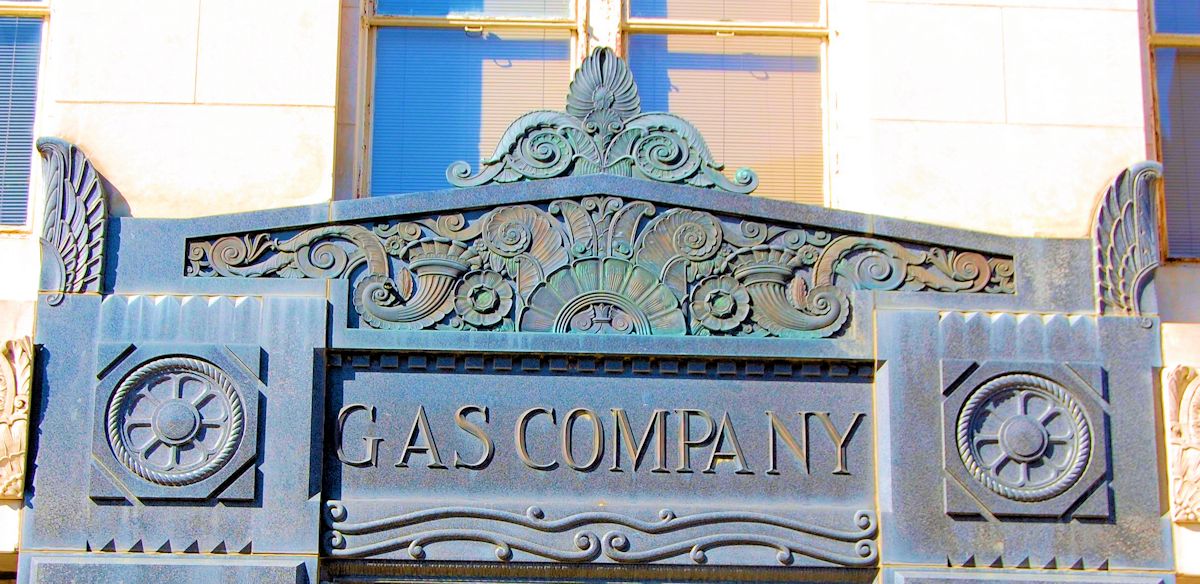
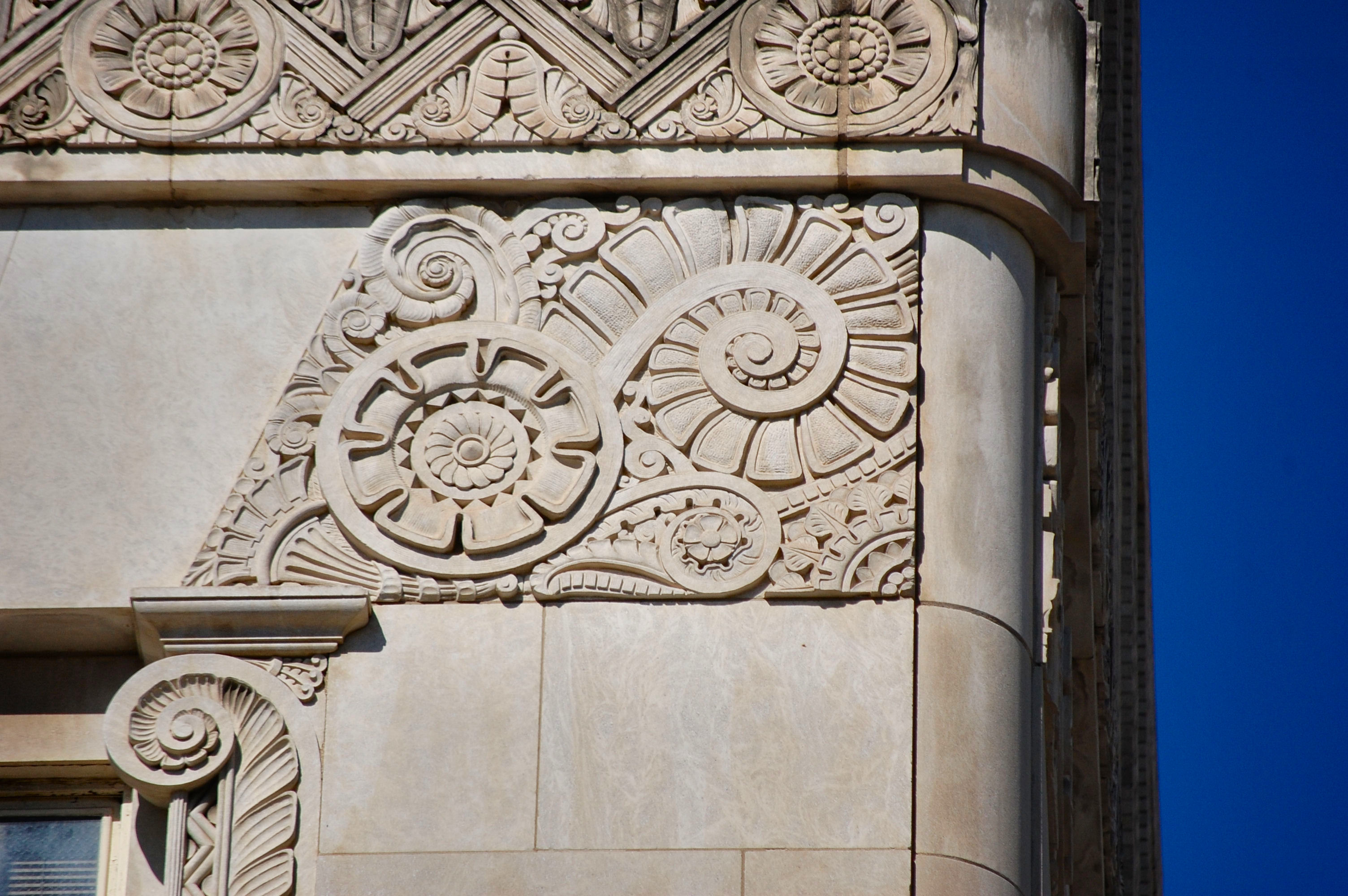
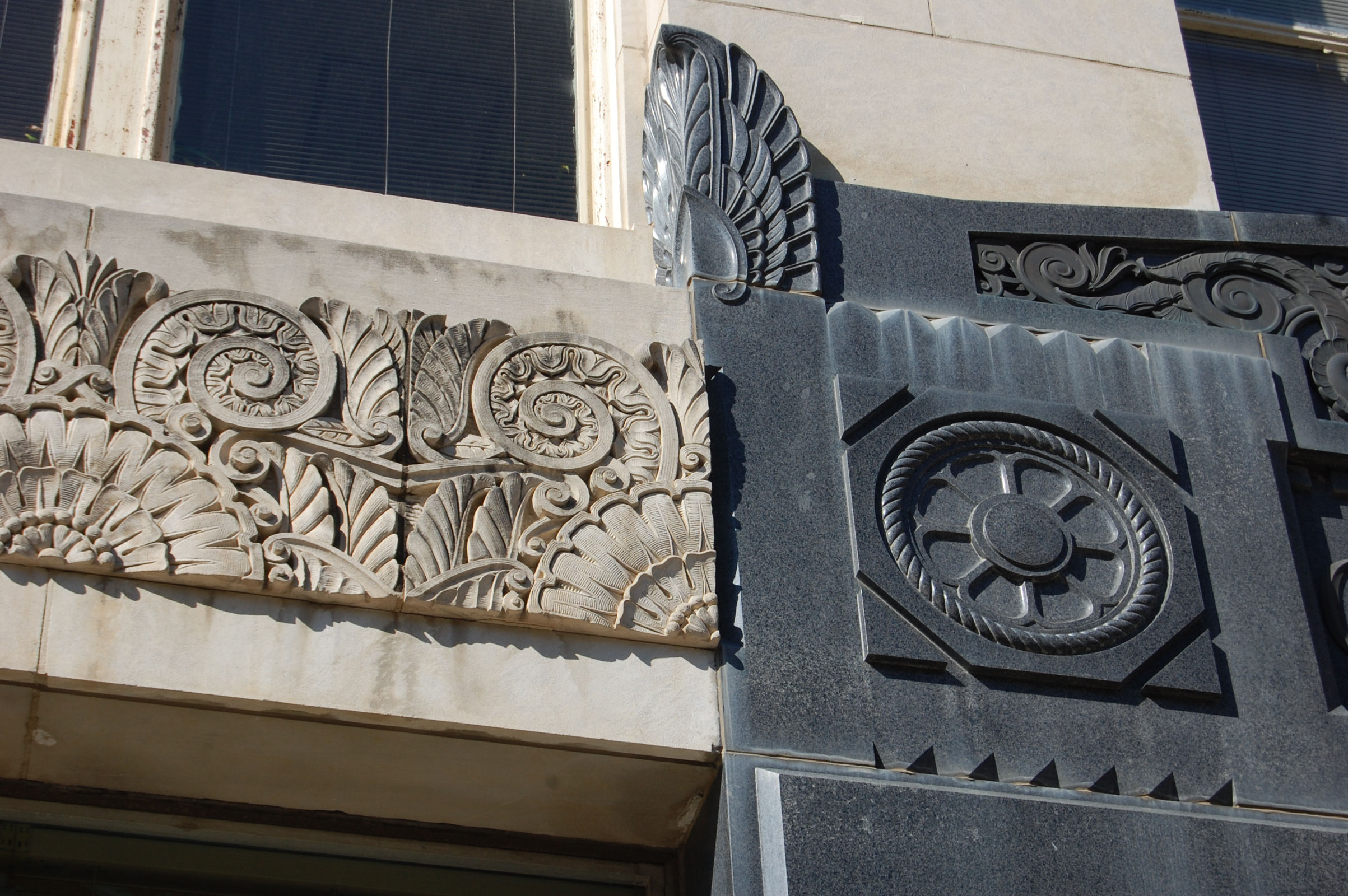
 Interior tiles.
Interior tiles.
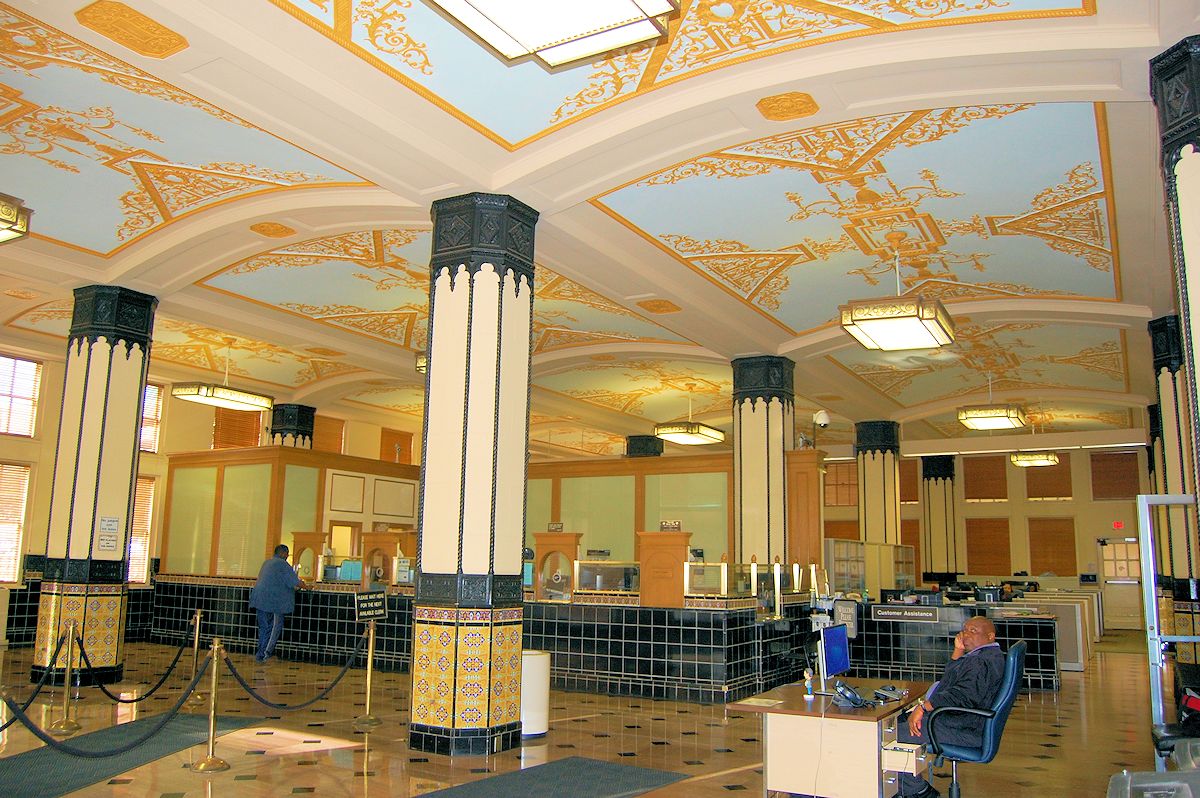 Lobby.
Lobby.
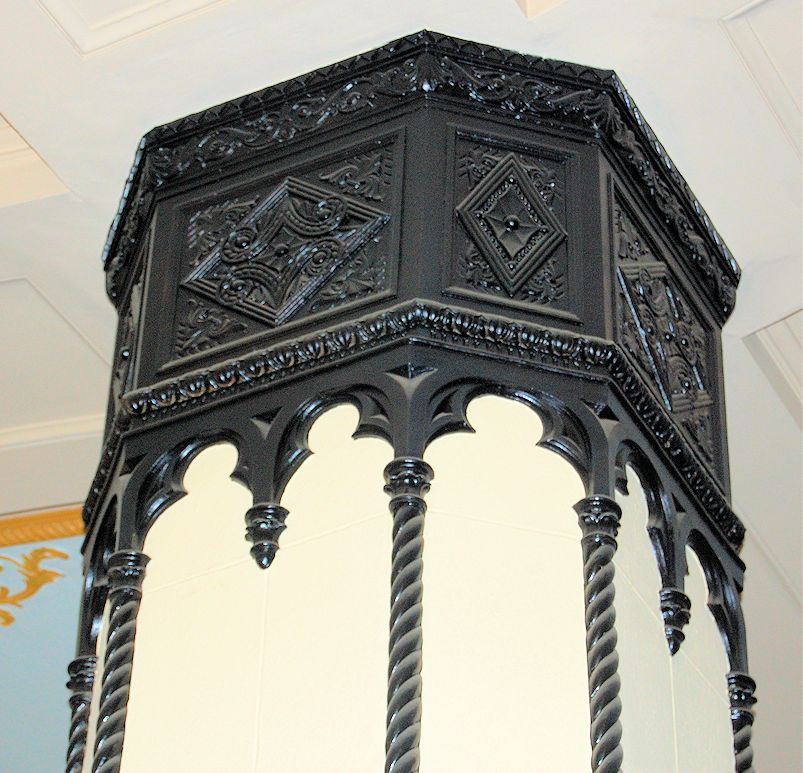 Column.
Column.
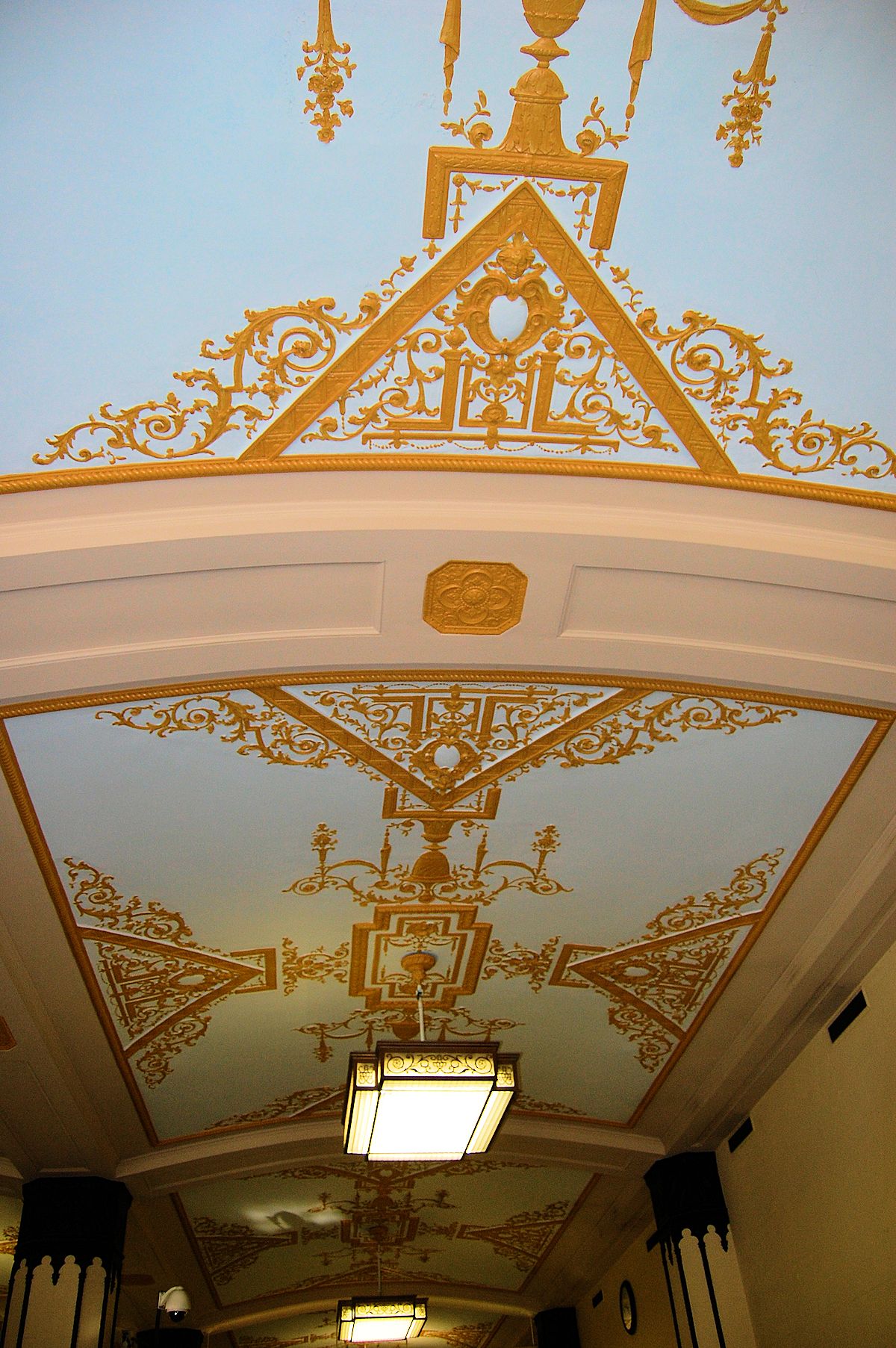 Ceiling.
Ceiling.
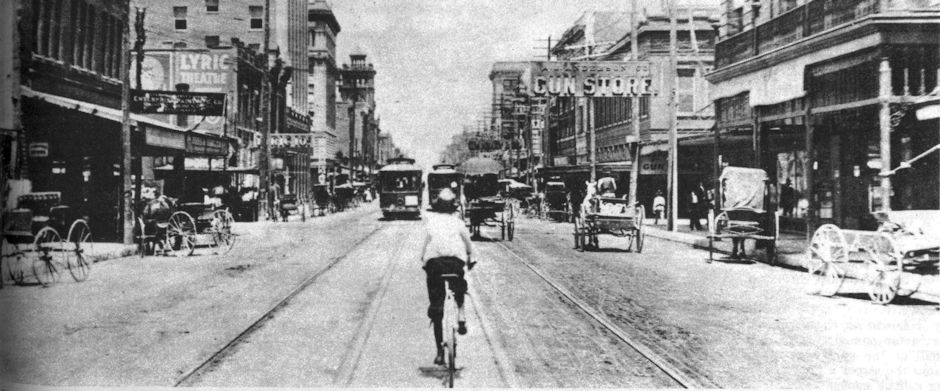





I’d forgotten how beautiful this building is inside. And I never knew that Fort Worth EVER had gas lights in the streets- remarkable. I always learn something from your posts, Mike.
Thanks, Nancy. And good on Fort Worth for finding a use for that grand little building.